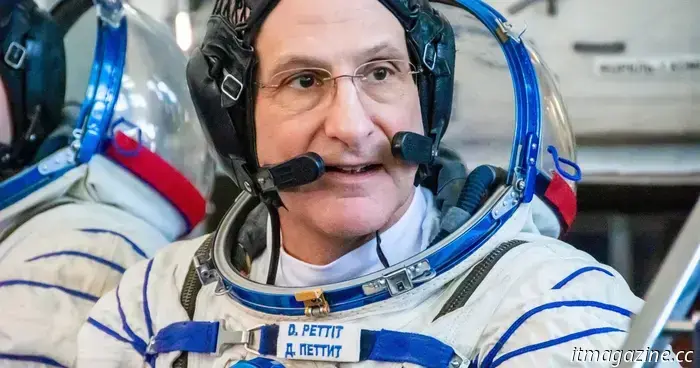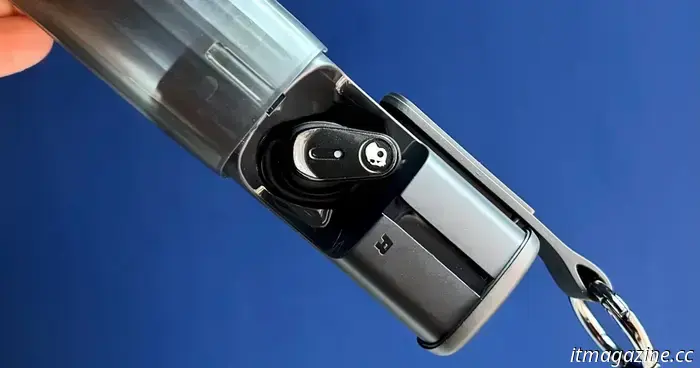
NASA astronaut looks forward to a smooth journey back after his turbulent experience 22 years ago.
NASA astronaut Don Pettit is set to return to Earth on a Russian Soyuz spacecraft after spending seven months at the International Space Station, making it an ideal moment to revisit his incredible experience during his first Soyuz return in 2003.
In his article, Pettit narrates in detail the remarkable experience of entering Earth's atmosphere at five miles per second, and how problems with Soyuz transformed their return flight into a sort of test landing for a future manned mission to Mars.
As their spacecraft was about to enter the atmosphere at high speed 22 years ago, Pettit and his crewmates — Ken Bowersox and Nikolai Budarin — realized that Soyuz was having issues with its guidance system. This led to a switch from a controlled, gentle descent to a much steeper and bumpier “ballistic” entry.
“This was the first entry with an upgraded cockpit for the Soyuz, and it was malfunctioning,” Pettit recounted for Smithsonian magazine, adding: “We descended with about as much grace as a cannonball.”
Pettit noted that during a ballistic entry, the G forces increase to more than double what is experienced during a normal entry, “so instead of feeling 3 to 3.5 Gs, we were experiencing peak loads over 8 Gs, after living in zero G for nearly six months. In my spacesuit, I weighed around 1,700 pounds.”
After navigating the unconventional entry, the next phase was the parachute deployment sequence, which was marked by its “carnival-ride oscillations.” The ride became smoother once all the parachutes were opened, but the landing was memorable.
“The Soyuz is known for its hard landings,” Pettit explained. “To soften the impact, a series of small rockets beneath the spacecraft fired moments before landing. The Russians refer to them as ‘soft landing rockets.’ Long-stroke shock absorbers under our seats cushioned the landing to something akin to a minor rear-end collision during rush hour. After tumbling end over end several times in a surreal moment, our capsule stopped on its side roughly 100 feet from the impact site, having disturbed enough earth to create a small flower garden.”
Pettit pointed out that because of the physics behind a ballistic entry, the Soyuz capsule had landed nearly 300 miles away from the planned location.
“After the parachute opened, we briefly communicated with a search and rescue aircraft to let its crew know we were safe. However, they lost contact before we could mention that our entry had been ballistic. Once we were below their radio horizon, we were out of range. No one at Russian mission control had any idea where we were. The ground personnel waited at the intended site, but we had unceremoniously failed to arrive.”
Had they landed correctly, support staff would have been there to assist in extracting them from the capsule, a task that would be challenging for an astronaut to do alone after months in microgravity aboard the ISS.
But without assistance, the three crew members managed to exit the spacecraft and took a moment to enjoy the sunshine.
“It felt great to lie on my back and connect with Mother Earth,” Pettit recalled. “The sky was a beautiful shade of blue. The scent of freshly disturbed soil and crushed spring grass from our Soyuz’s tumble filled the air. We heard a sparrow singing nearby and felt a gentle breeze on our faces. The three of us leaned back on our pile of survival gear as if it were a massive communal pillow. Our bodies spread out like a three-spoke wheel.”
About two hours after their landing, the crew finally established radio contact with a search plane. The helicopters with ground support personnel arrived about three hours later.
Pettit noted that their unusual return “bore an uncanny resemblance to a journey to, and a landing on, Mars … The similarities are striking. First, we lived in a weightless environment for five and a half months. Depending on the chosen propulsion, six months is a reasonable estimate for a one-way trip to Mars. Thus, our level of deconditioning was roughly similar to what a crew may experience upon arrival at the Red Planet. We piloted our own spacecraft through a high-G entry maneuver, much like what a crew might have to perform on Mars. Our landing sequence included parachutes and landing rockets, leading to a hard landing on dry ground in one of Earth’s more remote areas. This method of landing will be advantageous for reaching the Martian surface, and the landing site will likely be remote.”
He also added, “By ourselves, we carried out several basic operational tasks similar to those a crew might perform after landing on Mars, such as spacecraft safing, which includes reviewing procedures, flipping switches, and pushing buttons on the control panel to power down unnecessary equipment to conserve battery life for the radios. Since the Soyuz capsule landed on its side, we did this while strapped into a seat fixed to a
Other articles
 Skullcandy Method 360 ANC review: Excellent Bose audio at an affordable price
The Skullcandy Method 360 ANC are truly a blessing for budget-conscious Bose enthusiasts.
Skullcandy Method 360 ANC review: Excellent Bose audio at an affordable price
The Skullcandy Method 360 ANC are truly a blessing for budget-conscious Bose enthusiasts.
 Steam's hidden page reveals the total amount you've spent on games.
It's likely time for a dose of reality.
Steam's hidden page reveals the total amount you've spent on games.
It's likely time for a dose of reality.
 The latest Polaroid Flip features sonar autofocus.
Polaroid has released a new instant camera that it aims to convince you to set your smartphone aside, if only temporarily.
The latest Polaroid Flip features sonar autofocus.
Polaroid has released a new instant camera that it aims to convince you to set your smartphone aside, if only temporarily.
 This cost-effective HP laptop is now even cheaper with a $200 discount.
The HP 15.6-Inch Laptop is quite budget-friendly after a $200 price cut at Walmart, and it serves as a reliable productivity device.
This cost-effective HP laptop is now even cheaper with a $200 discount.
The HP 15.6-Inch Laptop is quite budget-friendly after a $200 price cut at Walmart, and it serves as a reliable productivity device.
 The Samsung Odyssey G3 gaming monitor is now even more budget-friendly with a discount of $80.
The Samsung Odyssey G3 gaming monitor, equipped with a 24-inch Full HD display and a 180Hz refresh rate, is available at Best Buy for only $120.
The Samsung Odyssey G3 gaming monitor is now even more budget-friendly with a discount of $80.
The Samsung Odyssey G3 gaming monitor, equipped with a 24-inch Full HD display and a 180Hz refresh rate, is available at Best Buy for only $120.
 A leak indicates that the Snapdragon X Elite 2 will significantly enhance laptop performance.
A recent leak indicates that Qualcomm's upcoming Snapdragon laptop chip will feature enhanced clock speeds and significant performance improvements.
A leak indicates that the Snapdragon X Elite 2 will significantly enhance laptop performance.
A recent leak indicates that Qualcomm's upcoming Snapdragon laptop chip will feature enhanced clock speeds and significant performance improvements.
NASA astronaut looks forward to a smooth journey back after his turbulent experience 22 years ago.
NASA astronaut Don Pettit is set to return to Earth on a Soyuz spacecraft later this week. Learn about his remarkable journey back on the Russian spacecraft in 2003.
